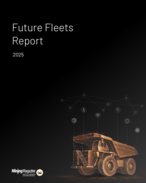Funded by the Australian Coal Association Research Program, Eco Logical Australia New England and Hunter region manager and former UNE academic Dr Paul Frazier told ILN the aim of the project was to develop remote sensing-based techniques to monitor the effects of longwall mine subsidence on the surface environment.
Electromagnetic exploration techniques were trialled using the EM38, which measures electrical conductivity.
For the agricultural component of the project, the research team worked at Beltana in the Hunter Valley of New South Wales and at Kestrel in Queensland’s Bowen Basin.
“Comprehensive monitoring at both sites found that subsidence had created no statistically significant impact on agricultural production,” Frazier said.
“We also found that high-resolution, remote sensing data and on-the-go soil survey through EM38 provided useful continuous data sets for monitoring in agricultural environments.”
Frazier said an aim of the project was to develop an industry-standard protocol.
“This protocol has been developed and is part of the interim report C15015 available through ACARP.
“We have already consulted the industry through our monitors at Xstrata and BHP. In addition, we have consulted a steering committee that included government agency representatives and Rio Tinto industry representatives. And we have presented the methods at about five industry conferences.
“We are confident that the methods present the industry with a way to improve their partial rehabilitation sign-off and closure goals.”
The project also found the use of remote sensing was more cost effective than other methods for monitoring subsidence in mining areas.
“This was a key focus to the research program,” Frazier said. “By minimising field work and ground-based sampling, we not only do better monitoring but field risks are reduced.
“We specifically set out to develop new methods that used the now widely available high-resolution, remotely sensed satellite images.
“I think we have established a compelling case for the integration of these data into the monitoring process. They present the only feasible method of making sure that every point in the landscape is monitored.”
With subsidence fears regularly popping up in the mainstream press, Frazier added the data was also very useful to government agencies and interested community members.
“Our case studies have indicated that subsidence found no real effect on the productivity of the landscape,” Frazier said.
“This information can help the industry to develop monitoring methods that are not only scientifically robust but assist with community consultation.”
While the research into subsidence has had positive outcomes, there is still further work to be undertaken, especially into the cumulative effects of underground coal mining in areas that host several operations.
“This issue is of great interest,” Frazier said.
“We don’t know much about this yet. I guess our monitoring methods provide a good starting point to develop understanding and develop scientific studies in this area.”
Frazier said the ultimate goal of research into subsidence would be the ability to predict the impact on the landscape with great assurance.
“Our first step to improve monitoring methods will build our knowledge base and allow us to make better-informed decisions as we develop and refine predictive models.
“Having said that, government and community demands will ensure that monitoring actual impacts is always part of getting better community acceptance and final site closure.”
























